Online Only 24/7/365 Based in Krabi Thailand.
Krabi
24/7
Monday-Sunday
12:00 am - 12:am
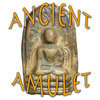
A truly rare and beautiful ancient amulet of the pantheon of early era amulets of the great Luang Phu To, of Wat Pradoo Chimplee, the Pra Pim Wanta Sema Nuea Pong Wat Plab. Made from broken pieces of the original Ancient Wat Plab amulets (from which the original Wanta Sema design was taken).
This amulet is often stated with differing dates on the internet (from 2496, which was in fact an earlier edition, this 2516 and the 2516 re-release in 2543). The confusion comes from to the fact that after their making, many amulets were not distributed, rather kept in hiding place Kru chamber within the Chedi Stupa for later distribution at intervals, or when necessary to raise funds.
This Pim Wanta Sema of Luang Phu To, was blessed in a very famous major blessing ceremony in 2516 BE, and kept until a special re-release from the remaining amulets in the chamber of the Chedi relic Stupa was made in 2543 BE, to raise funds to restore the Chedi at Wat Plab, which was falling into disrepair. This exhibit, comes with the original box of Wat Plab, and is in perfect unused condition, due to the fact that it comes from the Wat Plab Repository, which were kept for release in later years. We have therefore before us aa perfect and pristine condition exhibit of the Pra Pim Wanta Sema 2516 amulet that is very difficult to find an equally pristine model.
Above Pic; Close-Up of the Muan Sarn Sacred Powders of the Pra Pim Wanta Sema, showing the classic texture and presence of the Sacred Pong Wised of Wat PLab.
Macro Close up of the features and visual aspects of front face of Pra Wanta Sema 2463 BE Luang Phu To. A clear visual close up of the Muan Sarn Sacred Powders can serve the student well to examine and take note of the many different ingredients, and the appearance of the surface, its dryness, porosity, and the secrets of the interior content (where cracks reveal the inner substance). The aged surface is both hardened, dry and dense, and reveals the true characteristics of natural aging process over time, making it easy to authenticate.
This type of clear-to-recognise features make the amulet a 'Pra Tae Doo Ngaay' (Easy to see as Real). The surface of the amulet has a crinkled effect to it, where the Muan Sarn Sacred Powders have dried, and shrink inwards closing the gaps between the particles of powder, and tiny cracks have formed all over the surface as the amulet has shrunk from within over time, as it dries and hardens. The rear face is always the most important surface area for study once the front face features (Pim) have been confirmed to one's satisfaction, and authenticated.
Examination of the Muan Sarn Sacred Powders and surface features of the rear face, allows a much more accurate and detailed study of the content of the Muan Sarn, without obstruction of any design to obscure sight of the uniform raw surface features. This ecxhibit has the typical creamy fine textured, but extremely hardened and dry density of a classic Wat Plab amulet.
This is also an important aspect of examining the 'Kraap' mildew, which is found on the surface of ancient amulets which are buried in 'Kru' chambers; Namely, that most authentic amulets will have a non-uniform surface tonality to the Kraap Kru Mildew, and that Fake amulets, tend to have a Uniform colour and tonality to the surface mildew.
This is because it is almost impossible to spray a fake mildew onto an amulet, and make it have hundreds of different colours and tones to it, which is something that only happens with natural aging and atmospheric weather changes over many years of time. In the case of this classic Wat Plab Wanta Sema amulet, the surface is free of any Mildew and has been kept without burial in a Chedi Stupa or other Kru Chamber, and dried through the traditional method of the Dtamra Wat Plab, which is indeed, a major role player in the methods used by Somdej Pra Puttajarn (Dto) Prohmrangsri of Wat Rakang Kositaram, to make the famous Pra Somdej Wat Rakang Kositaram amulets.
Fake mildew is more uniform, and the true authentic mildew is far more complex in its appearance. Please take note of this when examining amulets which have been buried under the earth, or subjected to floods and environmental changes over their lifetime, and use the 'Kraap Kru' mildew as one of your authentication reference tools. Once one has examined front and rear face of an amulet, one should then continue on to peruse and examine the edges of the amulet, which will reveal its aging. One should peruse the cracks arisen through contraction, one is able to determine if the front and rear face surface appearance fits with what the edges reveal, as far as atmospheric changes, and under which conditions the amulet has been worn or kept over the years. For example, if the edges reveal that the amulet has contracted over a long time of constant dryness, but the surface of the front and rear reveal moisture exposure, then something would be amiss wouldn't it?
If the front face and rear face say the amulet has experienced multiple changes of moist to dry atmospheres, then the edges should also state the same. Of course, this is not an easy art to train the eye in, and you need to examine many amulets over many years to be able to see what the expert sees.
Wat Plab has always been a temple that Luang Phu To was afilliated with and whose Muan Sarn Sacred Powders he always used in the making of his famously priceless amulets. The Muan Sarn Sacred Powders for the Pra Wanta Sema Luang Phu To, are indeed also composed of mainly broken pieces of original Wat Plab amulets, along with the other Sacred Ingredients which Luang Phu To would ubiquitously mix into the Muan Sarn, for all his amulets. Wat Plab amulets are a sacred powder type amulet using a mixture of ground sea shells, pollens and flowers, incense powders, temple wall bricks. The mixture used by Somdej Pra Sangkarach (Suk) was the basic formula of Pra Somdej made before any other ever, and is thus the keystone of Pra Somdej amulet making, and the origin of the Pra Somdej Wat Rakang.
The Pim Wanta Sema contains the famously powerful Pong Wised of Wat Plab, as well as of course, Muan Sarn Sacred Powders from Luang Phu To, who always spent a long time with much effort, to find the rarest, most powerful and sacred herbs, woods and relic ingredients for the Muan Sarn used in the making of the Sacred Powders used for his Amulets. Most Pim were pressed by Luang Phu himself with his own hand, but he had help in assembling the Muan Sarn and many menial tasks from the Samaneras and the Lay Masters of Wat Plab temple. This is of course part of the reason that the Amulets of Luang Phu To possess Sacred Powders of Wat Plab in them, as well as the fact tyhaty Luang Phu To had a very close afilliation with this temple, and its Magical Wicha.
The Great Masters of Wat Plab in Bangkok Yai revealed their secrets to Luang Phu, about the mixing of Muan Sarn. It is a hardly known inner secret, that, all of the Great Masters with great Wicha, passed through Wat Plab, to receive the Wicha and secrets of the Mastery of the Pra Piti Haa (5 Piti Jhana Control). They revealed to him the secrets of making ‘Pong Lob’ Sacred Powders, according to the Dtamra Pra Somdej of Ajarn Saeng, who is reputed to have taught the Dtamra of Pra Somdej making to Somdej Pra Puttajarn (Dto) Prohmrangsri (Wat Rakang Kositaram).
It is Pra Ajarn Saeng, who some groups believe is the True Discoverer of the Hin Sila stone with the Dtamra Somdej hidden within it. The debate on this issue may continue forever, for proof is unfound. One other major base ingredient of the Muan sarn used in this first edition of Luang Phu To’s Amulet Trajectory, was a type of ‘Pong Wised’ (Special powder) or ‘Pong Puttakun), which was colected over many years by Luang Phu To, as he wandered on Forest Tudong. Often he would travel together with Luang Por Sodh (Wat Pak Nam Pasi Jaroen), and another Famous Monk of that time whose name has been lost from all documentation.
Luang Phu To of Wat Pradoo Chimplee was one of the greatest Masters of the Last Century, and a Highly revered Monk around the whole Kingdom of Thailand. he was Respected and revered by His Majesty Our great King, who was a close friend and companion.
This Great Monk achieved his status through his Great deeds and his great Diligence in his Patipatā (Practice of Purity and Renunciation), and in his Great Attainments in Dhamma Pariyatti and Dhamma Patipatā. His Blessings are believed to possess the most powerful protective power, and to increase success and prosperity. His amulets are both highly revered for their sacred Power of Protection and Prosperity, but also as a connection and Buddhanussati reminder of the Great Guru master, to beseech his blessings through the amulet.
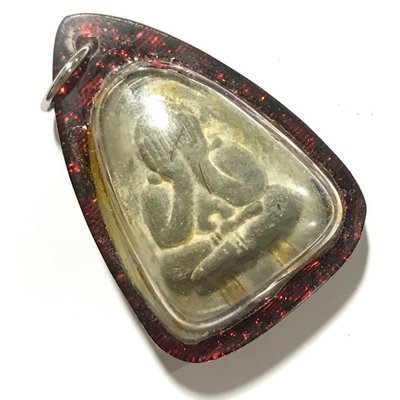
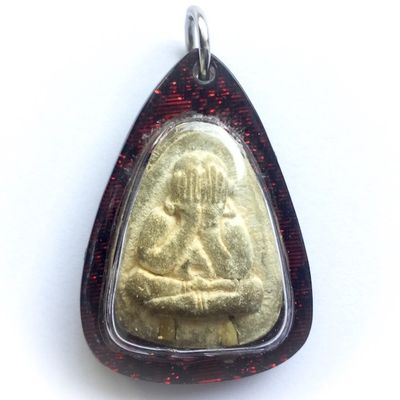
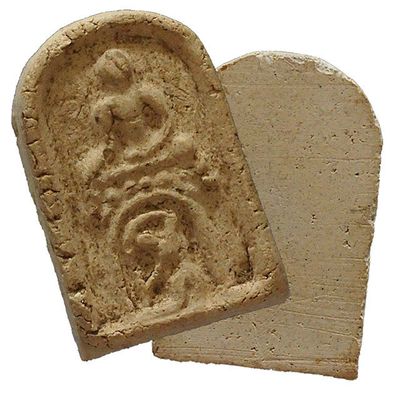
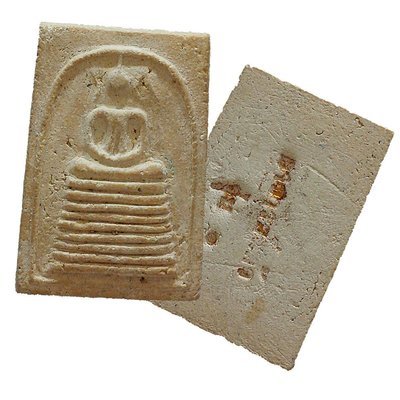
Because we guarantee delivery or money back/replacement, and Guarantee Authentic with real Blessings with all our amulets. Postage is Free Worldwide for all orders amounting to under 300 grams (60 grams for USA and Canada). We give Gifts with all orders large or small. Buying is Easy with our Secure Payment Gateway using Debit, Credit Card or Paypal, with customer protection built in by Paypal. Guaranteed Satisfaction with our 'You Can't Lose' policy, where we guarantee you that your item will be delivered, or if not, we replace or refund you. It is impossible to lose when you choose Us as your trusted supplier of Thai Buddhist Amulets and Occult Charms.
Good Service, only authentic amulets, and very Generous to customers, who always receive a nice gfift with every order! highly appreciated. Ajarn Spencer's knowledge induces great trust in the authenticity of the amulets in store

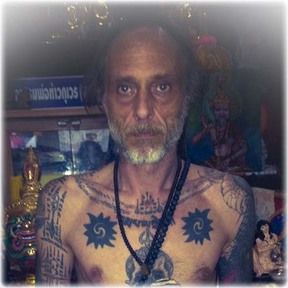
Ajarn Spencer
Author and Mystic
Ancient Amulet is Owned by Thai Buddhism and Occult Author, Ajarn Spencer Littlewood, who Guarantees Our Service with His Name. If there is one thing for which Ajarn Spenceris publicly known for, it is his Honesty, and his liking to Practice Generosity, which is one of the reasons Ancient Amulet has a rule that all customers receive minimum one free gift (amulet) of value with every order.
Online Only 24/7/365 Based in Krabi Thailand.
Krabi
24/7
Monday-Sunday
12:00 am - 12:am